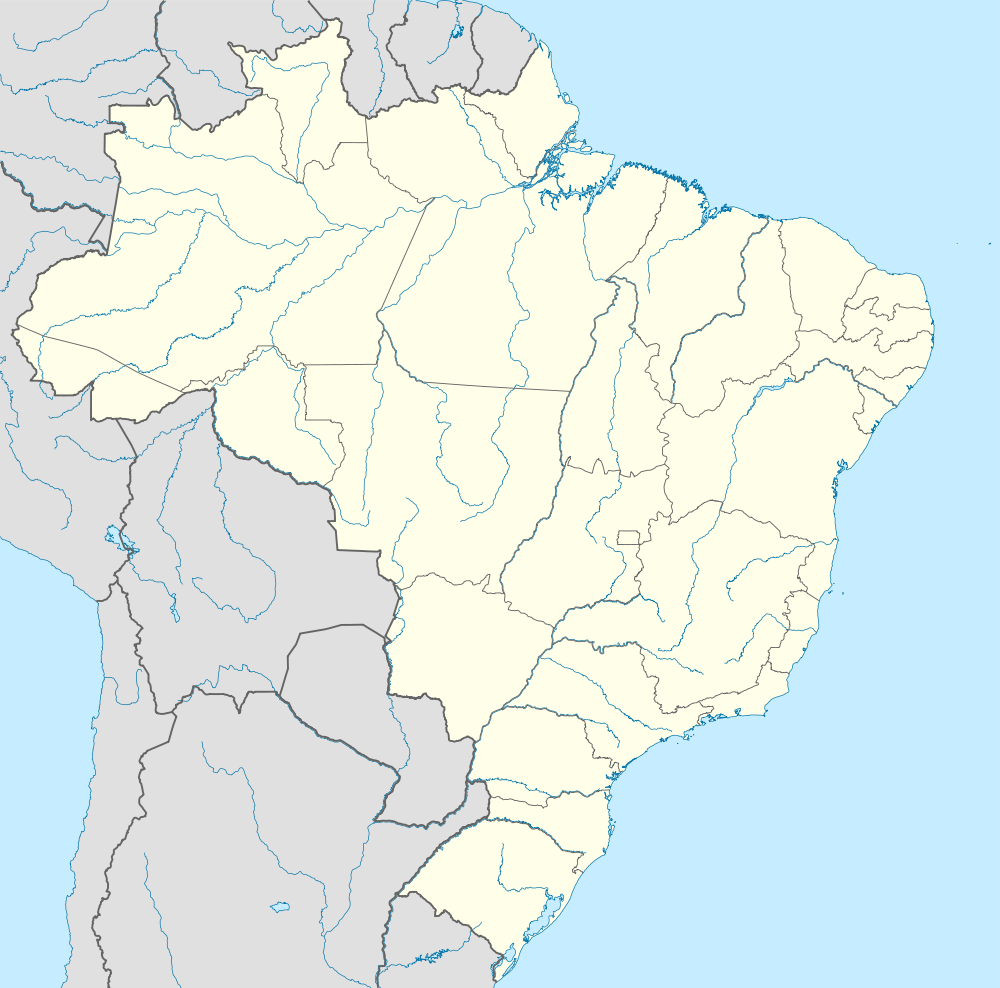Júlio de Castilhos
| Júlio de Castilhos | |
|---|---|
| Municipality | |
 Location within Rio Grande do Sul | |
 Júlio de Castilhos Location in Brazil | |
| Coordinates: 28°13′37″S 55°40′54″W / 28.22694°S 55.68167°WCoordinates: 28°13′37″S 55°40′54″W / 28.22694°S 55.68167°W | |
| Country |
|
| State | Rio Grande do Sul |
| Mesoregion |
Westcentral Rio Grande do Sul (Centro Ocidental Rio-Grandense) |
| Microregion | Santiago |
| Founded | June 14, 1891 |
| Area | |
| • Total | 1,929.383 km2 (744.939 sq mi) |
| Elevation | 513 m (1,683 ft) |
| Population (2003) | |
| • Total | 20,938 |
| • Density | 11/km2 (28/sq mi) |
| Demonym | Castilhense |
| Time zone | UTC-3 (UTC-3) |
| • Summer (DST) | UTC-2 (UTC-2) |
| Postal code | 98130-xxx |
| IBGE code | 4311205 |
| Website |
prefeiturajuliodecastilhos .rs.gov.br |
Júlio de Castilhos is a municipality of the western part of the state of Rio Grande do Sul, Brazil. Its area is 1,120.8 km² and its population was 3,571 in 2003. Its elevation is at 529 m (Praça "João Vieira de Alvarenga"), 516 m at the meteorological station and 503.81 m at the railway station. The origin of the name comes from the Tupi language. It is located 627 km west of the state capital of Porto Alegre, northeast of Alegrete. The city is considered the Brazilian capital of the Charolais cattle.
History
The municipality is named after a Brazilian advocate, journalist and a politician named Júlio Prates de Castilhos.
According to historian Firmino Costa, the land of the modern municipality of Júlio de Castilhos, was Indian. The area was part of the Spanish empire until 1801 when it was annexed to Portugal. The first pioneers came from São Paulo and Paraná. In 1912 or 1813, João Vieira de Alvarenga a youth at around 24 years with his wife Maria Rosa de Morais and his first son Manoel, they claimed lands between the pioneer cities with the title Sesmaria in which it received in 1826. In 1834, the municipality of Cruz Alta was founded, locate by the Rio Prado. The today's municipality was created from the lands of the district of São Martinho. Coxilha do Durasnal established ranches around the area. In 1876 with the emancipation of São Martinho, the second district of Povo Novo was created. On June 17, 1877, Manoel Vieira de Alvarenga founded the city of Júlio de Castilhos. On June 14, 1891, São Martinho was emancipated passed and created the municipality of Vila Rica. Their first municipal elections were held in 1896 with Capitão Luiz Gonzaga de Azevedo as its winner and its first mayor. In 1905, the city was renamed to its current name Júlio de Castilhos.
External links
- http://www.citybrazil.com.br/rs/juliodecastilhos/ (Portuguese)